Dual multi-purpose tower engineered to cut ultra-deepwater well delivery costs
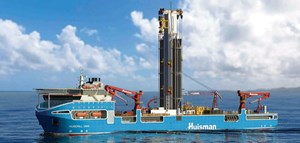
Any root cause analysis of the year-over-year reductions in operators’ return on capital employed (ROCE)—an economic malady aggravated by today’s appreciably lower commodity prices—falls squarely on flat times that are all-too-emblematic of deepwater and ultra-deepwater drilling rigs. Accordingly, the intensified demand for improvement in drilling efficiencies has inspired a step-change advancement in the form of a new-generation drillship design, integrating an enhanced version of the ground-breaking Dual Multi-Purpose Tower (DMPT), with built-in efficiencies, engineered to slash non-productive time (NPT), while elevating HSE profiles.
Bearing little resemblance to a typical derrick, the pioneering DMPT builds upon proven technologies, with the incorporation of a myriad of new-age efficiency drivers, highlighted with genuinely automated tripping and robotic pipe handling. Furthermore, unlike traditional drilling systems, the advanced drilling package features the capacity to run 180-ft stands of drillpipe and casing and 150-ft riser joints; separate drilling and construction well centers to permit concurrent operations; dual-skiddable rotary hang-off tables; no V-door imitations; no cut-n-slip requirements and redundant heave compensation systems, among others.
Notably, a number of DWOP exercises show increased tripping speeds, reduced fuel consumption by virtue of the integrated ship design and the built-in efficiencies of the new DMPT, and reduced ultra-deepwater well construction time. All of this reduces costs, from 20% to 25% per well. Compounding these cost reductions is the capacity to remove a host of hazardous rig floor operations from the critical path. Moreover, a state-of-the-art test tower, to be commissioned later this year, is designed to validate, and demonstrate, the integrity and automated operation of the latest
DMPT design.
ECONOMIC DRIVERS
Until the global economic crisis took hold in late 2008, operators’ upstream ROCE had doubled sequentially, from 10% to 20%, in sync with steadily rising oil prices, which rose from $20/bbl for much of the 1990s to over $80/bbl at the end of 2008. However, following their dramatic drop in 2009, oil prices continued on an upward trajectory to more than $100/bbl, but ROCE retreated to the 10% levels not seen since the days of $20/bbl oil.
Obviously, the lower returns can be attributed largely to the widely acknowledged acceleration of well delivery costs, fueled, in no small part, by the push into deeper waters and the targeting of horizons more than 30,000 ft below the mud line. Many of those deeper prospects are relatively undefined, thereby posing a host of technical issues, not the least of which is dealing with narrower pore pressure/fracture gradients, which compound well costs and risks.
The technical demands, and the corresponding escalation of well construction costs, have, in turn, illuminated the notoriously high flat times of conventional floaters, which have been substantiated as accounting for up to 77% of on-location time.1,2 Today, in the wake of persistently low gas prices and the free-fall in oil prices, from their highs of more than $110/bbl late last year, the pressure to reduce costs and elevate unacceptable upstream ROCE has never been greater.
In this low-price environment, negotiating cost reductions from service and product suppliers is a start, but this represents a fraction of the overall causes of ever-increasing costs. True decreases in well delivery costs can only come with optimizing drill times and reducing rig inefficiencies to eliminate, or at least reduce considerably, flat time. That economic reality served as the catalyst for the enhanced DMPT design for semisubmersibles and drillships.
STEP-CHANGE IN EFFICIENCY
The genesis of the latest-generation DMPT can be traced to 1999, when the concept of a multi-purpose drilling tower, to replace the typical derrick on a drilling rig, was conceived for use on the Q4000 intervention semisubmersible. The first iterations of the DMPT were introduced in 2010 and 2011, on the two Noble Bully drillships, both of which went on to win Shell’s “Global Floating Rig of the Year” awards in 2013 and 2014.3 A second-generation DMPT design was implemented on the Noble Globetrotter I drillship in July 2012, and the Globetrotter II drillship the following year, Fig. 1.
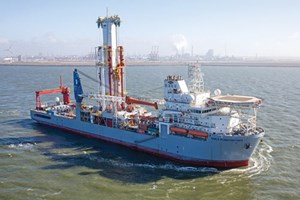
Going forward, to identify possible ways of reducing spiraling well delivery costs, a post-hoc investigation was initiated, comprising in-depth discussions with operators and contractors, as well as a thorough performance review of the drillships employing the first generations of DMPT. Many of the lessons learned, and other data collected, were compiled in the designs of the enhanced, third-generation, DMPT drilling package, as well as the complementary Huisdrill 12000 drillship. The predominant objective of the “clean slate” development strategy was to capitalize on these field-proven technologies to essentially engineer inefficiencies out of the equation during the design phase.
For starters, the newly designed, 682-ft × 119-ft drillship, which is rated for up to 13,200 ft of water and well depths of 40,000 ft, is more compact and delivers less displacement than its conventional counterparts. The Huisdrill 12000, likewise, was designed to carry a variable deck load (VDL) of 30,000 mt, but with increased stand/riser lengths. With a 20,000-mt payload, the new drillship design displaces 58,000 mt, far less than the 94,000–100,000-mt displacement of a typical drillship with the same 20,000-mt payload.
A flat, unobstructed work deck was added that is flush with the drill floor and only 16 ft above the main deck, providing roughly 49,500 ft2 of functional deck space. This exceeds, by more than 18,000 ft2, the usable deck space available on a typical drillship. Contributing to the more expansive work deck is the below-deck storage capacity for up to 13,200 ft of riser joints. Importantly, the flush drill floor and work deck reduce the vertical movement of personnel and goods, reduce blind spots, improve visibility and provide a safe, easy access to, and from, both of the DMPT well centers.
Along with the capacity to store and run up to two 20,000-psi BOP stacks, and in keeping with an emphasis to prepare up front for future requirements, the Huisdrill 12000 was intrinsically designed to accommodate both managed pressure drilling (MPD) and dual-gradient drilling (DGD). In addition, among the efficiency innovations for off-line activities, the design incorporates three self-cleaning fluid systems—two for oil/synthetic and water-base muds, and a third for completion brines.
LATEST-GENERATION DMPT
The fundamental component to the step-change improvement in cost-reducing efficiencies, however, is the re-designed DMPT, which builds upon the field-proven drilling package to further remove many of the operational limitations of conventional drillships. For instance, as with earlier versions, the DMPT eliminates the standard lattice-type derrick structure around the hoists, thus removing all V-door limitations. Accordingly, pipe, risers and larger subsea hardware can be skidded or hoisted directly to the dual-activity centers.
Dual-draworks. Furthermore, the DMPT incorporates the validated dual-drawworks technology, which effectively eradicates the need for standard slip-n-cut procedures. The dual drawworks configuration debuted on the drillship Bully I, which Shell attributed to saving 5.5 days and $6.5 million, solely by eliminating the cut-n-slip requirement for a drilling program in South America.
Heave compensation. The new DMPT design also incorporates both passive and active heave compensation systems, along with a fingertip-controlled “splittable” block, with detachable sheaves that allow isolated reeving of the block without having to re-reeve the entire system. This unique push-button feature helps to increase tripping speeds, decreases waiting-on-weather (WOW) downtime by expanding the workable weather window, and reduces incident-related NPT often associated with reeving changes.
Stands of 180 ft. One of the dominant features of the new DMPT design, and a primary contributor to its greatly accelerated tripping speeds, is the unequaled capability to run 180-ft stands of drillpipe/casing and 150-ft risers. Typical drillships, by comparison, can run maximum stands of 135-ft drillpipe/casing, with risers of no more than 75–90-ft in length. In addition to an increased 3.0 million-lb hookload, the new-generation DMPT has four hang-off points in the moonpool, double that of its conventional counterparts.
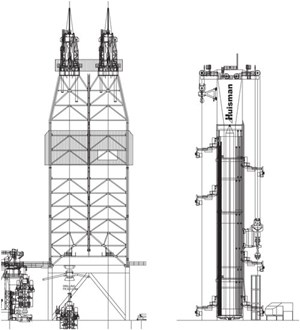
Despite the longer 180-ft stands, and because the DMPT does not require a customary substructure, the tower’s overall height is actually less than that of a floater employing a conventional dual derrick, running 135-ft stands, Fig. 2.
In tandem with the modified handling procedures of the subsea blowout preventers (SSBOP) and X-trees, courtesy of zero V-door limitations, the significantly reduced height and lower center of gravity, likewise, enhances vessel stability, resulting in a high, cost-saving payload/displacement ratio.
Significant cost savings. By far, the predominant cost-savings are realized with the newly designed ability to run 180-ft stands of drill pipe, which greatly reduces tripping times, and connections during drilling or reaming, as well as the number of starts and stops of the mud pumps. By way of illustration, for a 6,500-ft open-hole interval, connection times usually run 10 min. to 15 min. for a standard 135-ft stand. By comparison, running 180-ft stands eliminates 12 connections, amounting to 3.0 hr saved per trip. In addition, improved hole cleaning with faster trips reduces the risks of differentially stuck pipe and wellbore ballooning, which can occur with periodic starting and stopping of mud pumps.
Meanwhile, the recent development of a proprietary 150-ft marine drilling riser joint has been designed to increase riser running speed and reduce the number of connections, leading to less leak paths when connecting the cumulative 13,200-ft-long riser string. The riser joint design methodology takes into consideration the fact that the buoyancy module dry-weight increases with deeper waters at an average 10% for every 2,000 ft. Hence, a combination of 70% of 150-ft riser joints and 30% of 75-ft riser joints was calculated as optimal for meeting all assessment criteria during handling and running of the riser string. Consequently, standard practice will have 150-ft risers run to water depths of 8,000 ft, followed by 75-ft risers from 8,000 ft to 12,000 ft, and ultimately, a bare, or zero buoyancy, riser from 12,000-ft to 13,200-ft water depths.
Complementing the intrinsically faster tripping speeds of longer stands, however, was a totally new approach to rig floor automation, designed into the latest-generation DMPT.
Fresh take on automation. Attempts at automating the well construction process, long the holy grail of the drilling sector, have been well-documented in literature.4,5,6,7 Unlike the common “bolt-on” approach to mechanizing aspects of the drilling operation, for the new integrated Huisdrill 12000 drillship and DMPT design, Huisman took an entirely different approach and looked at engineering the rig floor process to accommodate true, seamless automation.
Obviously, one of the primary targets of a truly automated process is the more repetitive rig floor activities, such as slip-to-slip connection times during tripping, where analysis of key performance indicators (KPI) often shows wide variance between towers. Whether the variation is a consequence of worker fatigue, better-trained crews on one tower, or some other reason, the discrepancies represent hidden inefficiencies that never appear on the morning report, but are ripe for robotic automation. Thus, the objective of the development was to ensure that recurring rig floor activities are performed safely, predictably and efficiently.
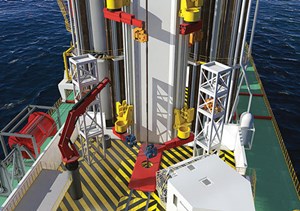
Incorporating feedback and lessons learned from the post-hoc study, the DMPT integrated a next-generation, automated pipe-handling system. A key principal of the automated approach was to keep motions simple, with the control system built as the core of the design, using lessons learned from the automatic tripping technology, first employed on the Noble Globetrotter II.
The new pipe handling system (Fig. 3) features small, robust multi-functional manipulators mounted on tracks that are built into the corners of the tower. The manipulators, which are swapped out easily and maintained off-line, deliver movements that simply rotate and extend, with no translating rackers. The slots in the two setback drums can hold various pipe diameters, while the setup, itself, includes a number of built-in redundancy features. The entire handling system is designed for a consistent slip-to-slip connection time of only 70 sec, thereby increasing tripping speeds of 180-ft stands to roughly 5,300 ft/hr.
NEW-LOOK RIG FLOOR
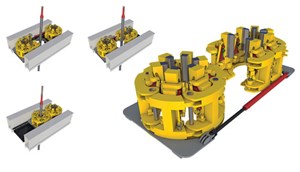
Augmenting the efficiency gains of truly automated pipe handling is the atypical rig floor configuration, with two individual activity centers, which are separated physically by the DMPT, itself, and allow for simultaneous and safe operations. In other words, the DMPT features separate construction and drilling activity centers that enable, for instance, the BOP stack to be run at the same time that the top hole is being drilled, while stand-building or other construction activities can continue during fully automated (non-personnel) activities on the drilling well center.
New to the re-designed DMPT is an innovative, U-shaped rotary hang-off table (Fig. 4), that can skid away from the critical path, while the drillstring remains suspended in the well center by the top drive. A power slip, mounted in the table, is designed to open up to 21 in. and can handle pipes, from 3½-in. to 9¾-in., without changing inserts. Upon skidding out of the critical path, an extremely large opening is created, to allow large centralizers and other downhole equipment to be lowered through, without having to first remove bushings and adaptor rings.
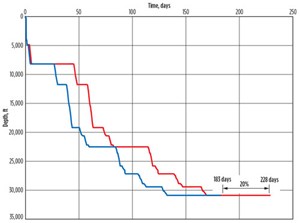
In addition, a second rotary hang-off table can be set up off the critical path, specifically for running casing, and, thereby, allowing ultra-fast changeovers from drillpipe to casing or vice versa. According to simulations and operator feedback, up to five days of time-savings per well could be realized, simply by not having to change slips in the critical path.
DWOP VALIDATIONS
A number of DWOP exercises, coupled with extensive field experience from the previous-generation DMPT systems, substantiated significant reductions in well delivery times and costs. Generally, DWOP exercises show drill times and costs typically being reduced by 20% to 25%.
Specifically, one 228-day DWOP well application (Fig. 5) considered the running of 180-ft stands of drill pipe and casing, and 150-ft risers; automation of the tripping and pipe handling functions; use of the dual hang-off tables; elimination of slip-n-cut requirements; and the other unique features incorporated in the drillship and DMPT drilling system. The results showed a 45-day reduction in well delivery time and a $58.1 million/well potential cost-savings. Included in the savings were $10,000/day in less fuel consumption, owing to the ship’s reduced displacement and effective sail area of the DMPT, which, with the added safety features, also enhances the HSE profile of the system.
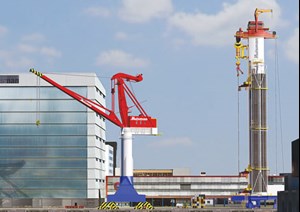
Difficult to quantify in a DWOP exercise, but important to consider, are potential ancillary savings that are highlighted by ingrained risk-mitigation factors, such as key equipment redundancies and, owing to the 180-ft stands, fewer connections and, in turn, reduced risk of kicks. Also difficult to quantify are savings associated with, among other features, the splittable blocks; increased safety and associated downtimes related to the separation of work floors; reduced dropped objects and fewer connections; hole cleaning; recovery for unexpected bit changes; and faster recovery for unexpected SSBOP roundtrips, directly attributable to 180-ft drillpipe stands and 150-ft risers. Therefore, it can be assumed, reasonably, that the aggregate savings associated with these risk mitigation factors conceivably could cut costs another 10% over the course of drilling an ultra-deepwater well, making the case for total savings of up to 30% in overall, well delivery cost reductions.
FULL-SCALE TESTING TOWER
A state-of-the-art testing tower, to be commissioned later this year at the Huisman world headquarters in Schiedam, the Netherlands, is designed to validate and demonstrate the integrity and automated operation of this latest DMPT design, Fig. 6. The full-scale testing tower will simulate expected operational conditions, including drillship dynamic roll ±2°, as well as flow, pressure and real-world pipe and riser handling, using actual 180-ft stands and 150-ft risers. The tower, to be operational in third-quarter 2015, comprises nearly all the features to be included in future field versions, including dual drawworks and splittable blocks; a full, 3.0-million-lb. hookload capacity; a full-sized setback drum; up to four, multi-purpose pipe handling manipulators; heave compensator systems; and the dual hang-off tables. ![]()
REFERENCES
- Valenta, M. A.; M. W. Walker, P. E. Pastusek, J. R. Bailey, W. C. Elks, S. B. Lewis and N. D. Mitchell, “Maximizing capital efficiency by expanding the limiter redesign process to flat-time operations,” SPE paper 17051, presented at SPE ATCE in Amsterdam, The Netherlands, Oct. 27-29, 2014.
- Bond, D.F., P. W. Scott, P. E. Page and T. M. Windham, “Applying technical limit methodology for step change in understanding and performance,” SPE paper 51181, published in SPE Drilling & Completion, Vol. 13, Sept. 1988.
- Liou, J., “Next-generation semi replaces derrick with multipurpose tower,” Drilling Contractor, Aug. 29, 2013.
- Molin, A., D. Kortenkamp, P. Bonasso, D. Schreckenghost, S. Bell and K. Kusy, TRACLabs, “Automated planning of procedures for risk mitigation and efficiency,” SPE/IADC paper 168036, presented at the IADC/SPE Drilling Conference and Exhibition, Fort Worth, Texas, March 4-6, 2014.
- Aguiar, R. R.; D. Pirovolou, M. Folsta, J. Anjos, A. L. Martins, and M. Campos, “On the benefits of automation in improving the drilling efficiency in offshore activities,” IADC/SPE paper 168025, presented at the IADC/SPE Drilling Conference and Exhibition, Fort Worth, Texas, March 4-6, 2014.
- Martins, A. L., “On the path for offshore drilling automation,” SPE/IADC e-poster 163453, presented at SPE/IADC Drilling Conference and Exhibition, March 5-7, Amsterdam, The Netherlands, 2013.
- De Wardt, J. P., M. Behounek, C.D. Chapman, and D. Putra, , “Drilling systems automation—Preparing for the big jump forward,” SPE/IADC paper 163422, presented at the SPE/IADC Drilling Conference and Exhibition, Amsterdam, The Netherlands, March 5-7, 2013.
- Coiled tubing drilling’s role in the energy transition (March 2024)
- Advancing offshore decarbonization through electrification of FPSOs (March 2024)
- Subsea technology- Corrosion monitoring: From failure to success (February 2024)
- Digital tool kit enhances real-time decision-making to improve drilling efficiency and performance (February 2024)
- E&P outside the U.S. maintains a disciplined pace (February 2024)
- U.S. operators reduce activity as crude prices plunge (February 2024)
- Applying ultra-deep LWD resistivity technology successfully in a SAGD operation (May 2019)
- Adoption of wireless intelligent completions advances (May 2019)
- Majors double down as takeaway crunch eases (April 2019)
- What’s new in well logging and formation evaluation (April 2019)
- Qualification of a 20,000-psi subsea BOP: A collaborative approach (February 2019)
- ConocoPhillips’ Greg Leveille sees rapid trajectory of technical advancement continuing (February 2019)


